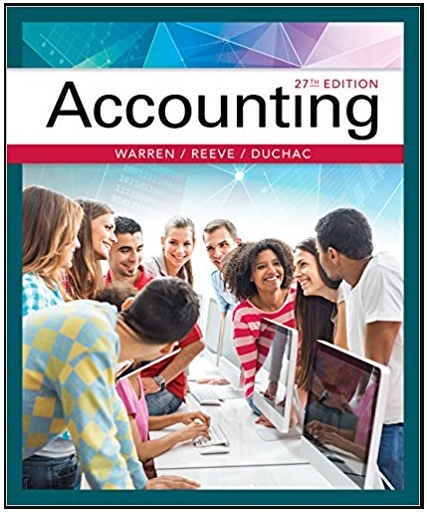Connie Young, an architect, opened an office on October 1, 2019. During the month, she completed the
Question:
a. Transferred cash from a personal bank account to an account to be used for the business, $36,000.
b. Paid October rent for office and workroom, $2,400.
c. Purchased used automobile for $32,800, paying $7,800 cash and giving a note payable for the remainder.
d. Purchased office and computer equipment on account, $9,000.
e. Paid cash for supplies, $2,150.
f. Paid cash for annual insurance policies, $4,000.
g. Received cash from client for plans delivered, $12,200.
h. Paid cash for miscellaneous expenses, $815.
i. Paid cash to creditors on account, $4,500.
j. Paid $5,000 on note payable.
k. Received invoice for blueprint service, due in November, $2,890.
l. Recorded fees earned on plans delivered, payment to be received in November, $18,300.
m. Paid salary of assistants, $6,450.
n. Paid gas, oil, and repairs on automobile for October, $1,020.
Instructions
1. Record these transactions directly in the following T accounts, without journalizing: Cash; Accounts Receivable; Supplies; Prepaid Insurance; Automobiles; Equipment; Accounts Payable; Notes Payable; Connie Young, Capital; Professional Fees; Salary Expense; Blueprint Expense; Rent Expense; Automobile Expense; Miscellaneous Expense. To the left of the amount entered in the accounts, place the appropriate letter to identify the transaction.
2. Determine account balances of the T accounts. Accounts containing a single entry only (such as Prepaid Insurance) do not need a balance.
3. Prepare an unadjusted trial balance for Connie Young, Architect, as of October 31, 2019.
4. Determine the net income or net loss for October.
Fantastic news! We've Found the answer you've been seeking!
Step by Step Answer:
Related Book For 

Accounting
ISBN: 978-1337899451
27th edition
Authors: Carl S. Warren, James M. Reeve, Jonathan Duchac
Question Posted:





